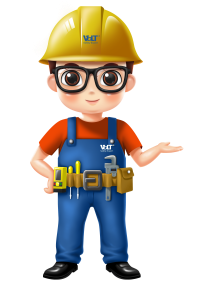Toyota Mirai is the first mass-produced hydrogen fuel cell vehicle in the world. It is equipped with the high-efficiency fuel cell system independently developed by the Japanese giant. It can convert the liquid hydrogen fuel into the electric energy driven vehicle, with a endurance distance of up to 483km and a fuel replenishment speed of 3-5 minutes. It is no different from the ordinary fuel vehicle, but it really has zero emissions.
Under special driving conditions, such as when the vehicle uses cruise control to climb a long slope and the accelerator pedal is pressed to the full open throttle position, the output voltage generated by the fuel cell booster converter may exceed the maximum voltage, the company said.
With regard to the way to deal with the recall, Toyota said that upgrading the firmware of the battery system is enough and does not require additional costs for consumers. Toyota dealers will upgrade the fuel cell system software for customers free, which only takes half an hour.
Toyota Mirai's most popular FCV
With the continuous consumption of oil resources, it is certain that traditional fuel vehicles will be replaced by new energy in the future. Toyota has the most say in the field of new energy vehicles; although the Prius, which has been mass produced and launched for several generations, is still burning oil, it is undeniable that it is of great significance to the research and development of new energy vehicles.
Compared with the domestic hot pure electric vehicle, hydrogen fuel cell has the advantages of higher energy density (about 7 times of the traditional battery per unit volume), faster filling and so on. Hydrogen fuel cell vehicle (FCV), as a relatively small part of new energy vehicles, has not been widely concerned by the market.
However, FCV sales increased significantly in 2016. According to data recently released by EV sales, the number of FCV registrations last year was 2312, an increase of 225% compared with 2015.
At present, FCV market mainly has three types of vehicles, namely, Toyota Mirai, honda clarity and Hyundai ix35 FC. Among them, Toyota Mirai has become the most popular hydrogen fuel cell vehicle in the market with 2039 registration volume, accounting for 88% of the market. Honda clarity registered 113, accounting for 5%; Hyundai ix35 FC registered 160, accounting for 7%.
Mirai,As a mass-produced hydrogen fuel cell vehicle, hydrogen is used to generate electric energy. The motor drives the vehicle and finally drives the vehicle. Toyota Mirai met with consumers in December 2014. Under the condition of full hydrogen, the vehicle has a endurance of 483km, which is better than the current mainstream electric vehicle.
发展之路,任重而道远
It is worth noting that, despite the momentum of Toyota Mirai, FCV is still unable to form a single level competitor compared with electric vehicles. According to EV sales, FCV accounted for only 0.3% of new energy vehicle sales in 2016.
In fact, compared with our current common pure electric vehicles, hydrogen fuel cell vehicles still have their own advantages. First of all, it takes about the same time to refuel as a regular gasoline car. It's not a little faster than an electric car. Second, the endurance level of hydrogen fuel cell driving mode is obviously better than that of pure electric vehicle with the same volume of battery pack. Third, in terms of the cost of hydrogen fuel, the current price of domestic fuel hydrogen in Japan is about 1000 yen / kg, and there is a possibility of reduction in the future, and its use cost is not high.
But the car's price is about 380000 Yuan, less various tax exemptions, and the price is 260000 yuan, which has no advantage over traditional medium-sized cars or even large and medium-sized cars. However, the price is not the most important thing, and the real obstacle to its development is the number of rare hydrogenation stations.
It is understood that in the first year of sales, Toyota Mirai achieved a good result of global sales of 700 vehicles; in 2016, the second year of sales, the sales performance of more than 2000 vehicles strengthened Toyota's dominant position in the field of hydrogen fuel cell vehicles.
However, Toyota will recall all Mirai fuel cell vehicles launched in December 2014, which have sold about 2840 vehicles worldwide so far, including Japan, the United States, some European countries, and the United Arab Emirates. Toyota today announced a global recall of Mirai, with a total of 2800 vehicles, basically the pace of clearance. EV sales had estimated that the sales volume of the car would reach 10000 this year based on the sales of the previous two years, and the recall may have some impact on this number.
According to the data of Dongfang fortune.com, the overall fluctuation of Toyota's stock price rising slightly today is not big, which seems not affected by the incident.
Hydrogen fuel cell vehicles do appear slightly small in the whole field of new energy vehicles. At present, there are few models in mass production (mainly led by Japanese and South Korean vehicle companies), and European companies are even less interested. High cost of R & D and production, imperfect infrastructure and low promotion channels are all obstacles to the development of hydrogen fuel cell vehicles. However, from the perspective of this incident, as a new thing, hydrogen fuel cell vehicle's technology and perfection is the most fundamental, which directly affects its global marketing. Hydrogen fuel cell vehicles have a long way to go if they want to be recognized by the mainstream and the market.







